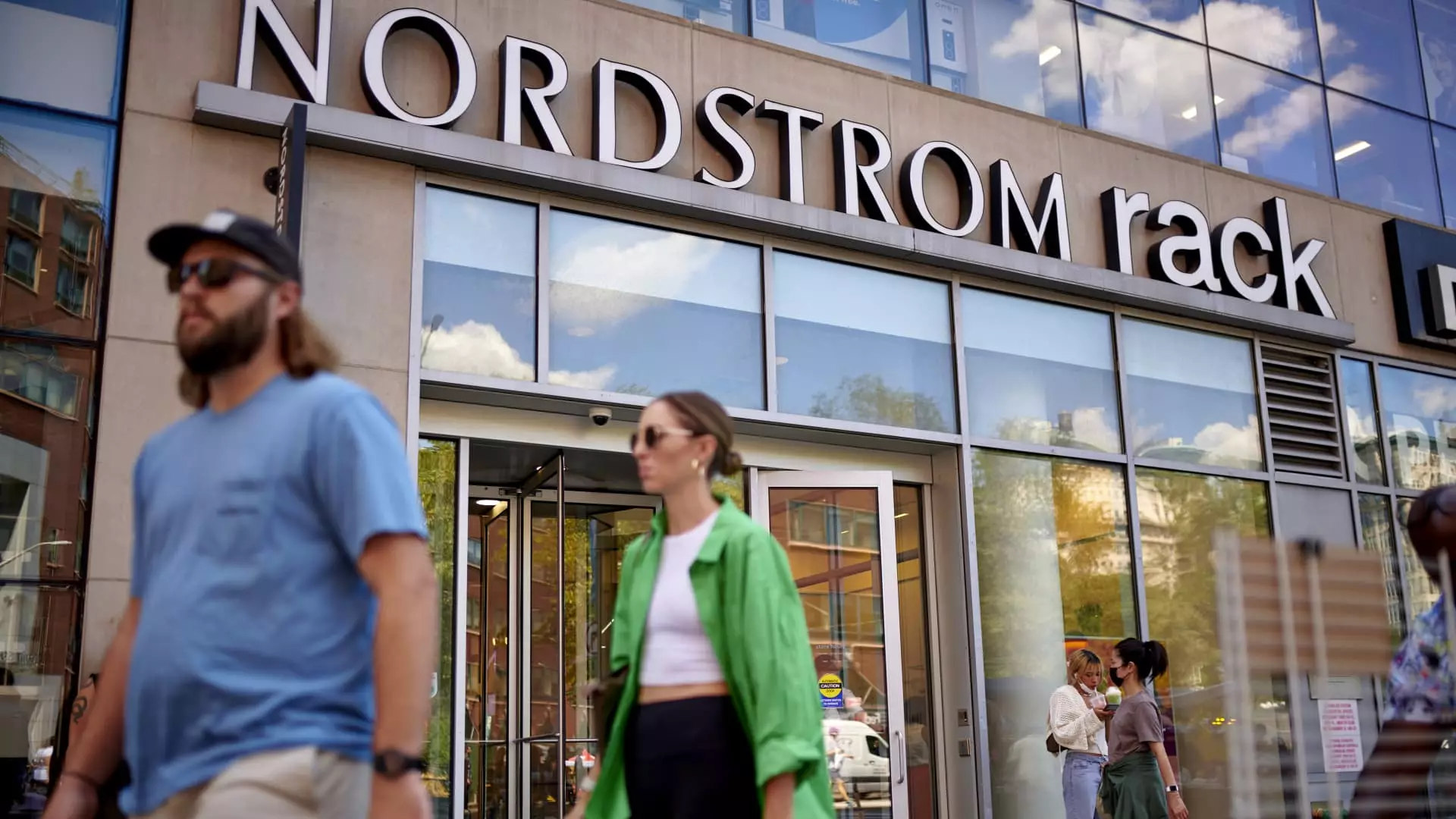On Tuesday, Nordstrom revealed its latest earnings report, demonstrating exceptional performance that surpassed Wall Street’s forecasts. The Seattle-headquartered retailer reported earnings per share (EPS) of 96 cents, a notable 25 cents above analysts’ predictions. This strong performance signals that Nordstrom is actively working towards enhancing efficiency and cutting costs. However, despite this quarterly success, the company offered a cautious outlook for the remainder of the fiscal year, indicating that external economic pressures still loom large.
Nordstrom’s revised guidance for adjusted earnings per share is now projected to fall between $1.75 and $2.05, a slight enhancement from its former guidance of $1.65 to $2.05. The company also anticipates a sales trajectory ranging from a decline of 1% to a growth of 1%, which is a more optimistic position than the previous expectation of a 2% decline to a 1% increase. This tempered optimism reflects a nuanced understanding of both the company’s performance and the broader market landscape.
In its recent fiscal quarter, which concluded on August 3, Nordstrom reported a net income of $122 million, equating to 72 cents per share, albeit showing a decrease from last year’s $137 million, or 84 cents per share. When accounting for one-time supply chain impairments, the adjusted EPS robustly stood at 96 cents. On the revenue front, Nordstrom’s sales reached $3.89 billion, which marks a 3.4% increase from the previous year. Despite this growth, it narrowly missed the revenue target that analysts had anticipated, which could raise questions about the sustainability of this upward trend, especially in a challenging retail environment.
Comparable sales—a crucial indicator of financial health—rose by 1.9%. Simultaneously, there was a 3.5% increase in gross merchandise value (GMV). However, it remains unclear whether this uptick was primarily due to price increases or an increase in volume, pointing to a potentially unsettling dynamic within consumer purchasing behaviors amidst rising inflation and high-interest rates.
CEO Erik Nordstrom expressed cautious optimism in a news release, stating, “Our second quarter results were solid, and we’re encouraged by the continued topline strength in both banners.” His comments highlight the company’s commitment to maintaining profitability and enhancing their gross margin. Yet, the context of this caution is essential to understand, particularly as consumers become more discerning in their spending.
To combat the negative effects of inflation and dwindling discretionary spending, Nordstrom has been strategically adjusting its operations. Encouragingly, the company has achieved a significant reduction in online order delivery times, improving logistics by over 5%. This operational efficiency may suggest that Nordstrom is on the right path to enhancing customer satisfaction, despite uneven sales results.
A cornerstone of Nordstrom’s growth strategy is its off-price banner, Nordstrom Rack. With impressive sales growth of 8.8% in recent quarters, the Rack is emerging as a vital component in the company’s ability to compete in the trending off-price retail sector, which is thriving in today’s market. In stark contrast, the mainline Nordstrom brand only saw net sales and comparable sales each increase by 0.9%.
To fortify this momentum, Nordstrom has committed to expanding its Rack locations, having successfully opened 11 new ones this fiscal year alone, with plans for at least 22 total openings by year-end. This aggressive expansion aims to capitalize on consumer trends favoring more affordable shopping options, particularly as individuals become increasingly budget-conscious due to economic pressures. The commitment to tapping into this sizable market signals Nordstrom’s dedication to remaining relevant and competitive.
Nordstrom’s latest earnings report illustrates a complex narrative of resilience in the face of mounting economic challenges. The retailer is undoubtedly making commendable strides in improving operational efficiency and capitalizing on market opportunities through its off-price segment. However, the conservative outlook and mixed results underscore the ongoing need for vigilance amidst economic fluctuations. As Nordstrom proceeds into the latter half of the year, it must navigate these turbulent waters with a careful balancing act between growth initiatives and cost management, ensuring that it sustains its upward trajectory while addressing evolving consumer expectations.

